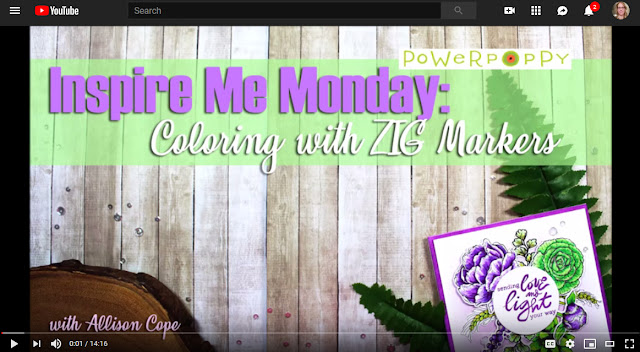Hello there, friends. It’s Marcella here today, and I thought it would be fun to share ideas for adding painterly details to your coloring. What do I mean by “painterly details”? Think of decorative qualities such as color, texture, line stroke — the little style extras that make your work feel unique and artistic. From stippling to ink washes, there are so many cool things to try, in fact you’re incorporating a few into your work already, I’m sure.
Today I’m coloring my new digital download,
My Favorite Pair, released just this week. I’ve been dying to dig into it with watercolor and gouache paints, so I squeezed a few colors onto my messy paint palette and got to work. How will I add painterly details? Let’s start with some history.
1. Reference the masters
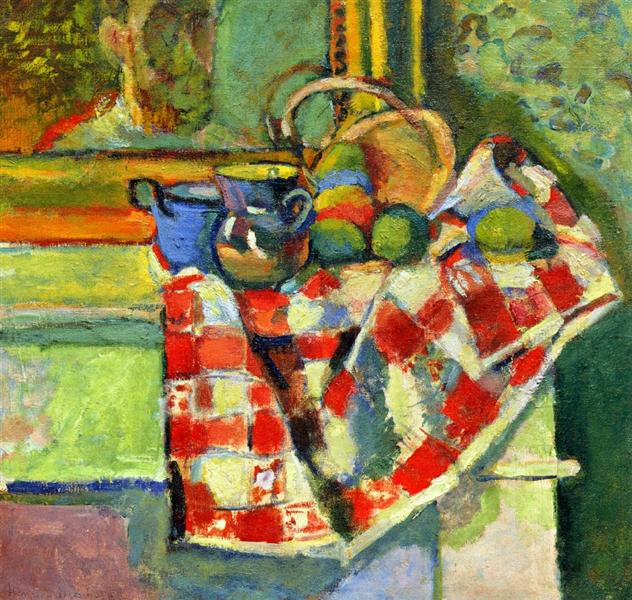 |
| Henri Matisse, Still Life with Checked Tablecloth, 1903. Source: WikiArt |
There are zillions of artists whose work you can follow for painterly inspiration — and having many choices can be daunting. For today, I suggest referencing the work of Henri Matisse, Paul Gauguin, Edouard Vuillard, Paul Cezanne — painters of the Impressionism and Post-Impressionism movements. Each artist could handily paint landscapes, still lifes, and portraits as realistically as you’d like, but their work became more exciting, interesting, and alive when they explored breaking through the traditional rules of painting. We can steal little ideas from their breakthroughs, and possibly have breakthroughs of our own.
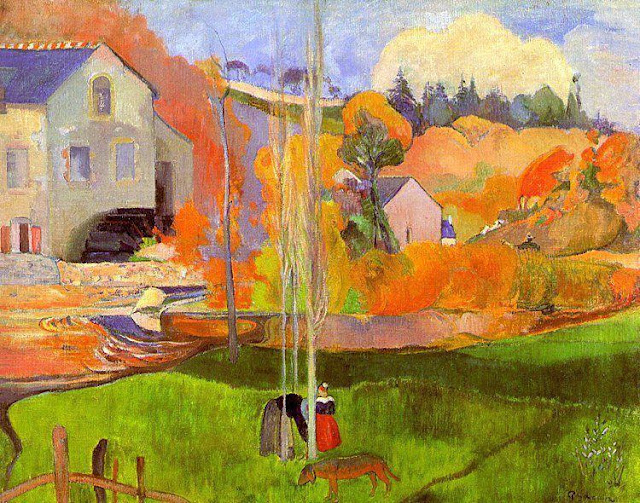 |
| Paul Gaugin, A Breton Landscape, 1894. Source: WikiArt |
Rather than painting the precise details of what the human eye sees, painters in the Impressionism movement shared the sensations and feelings of their visual experience via color, form, composition, and brushstroke. Rich dabs of orange, turquoise, yellow, green that would have seemed out of place in a more traditional, realistic painting, help communicate the richness of the world. The way light falls on an object. The feelings that wash over us, or the feelings we wish others to experience. We aren't just painting what is literally there, but our impressions of it.
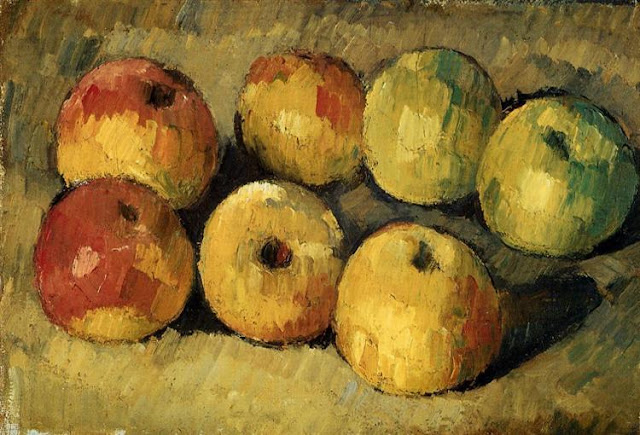 |
| Paul Cezanne, Apples, 1878. Source: WikiArt |
Controlling the brushstroke was an important part of the Impressionist artist's process. Notice how in Cezanne’s Apples, his strokes are short and thick, repetitive, almost feverish stabs of color. The impression from the overall work still reflects light and shadow, but because of Cezanne's use of thick, staccato brushstrokes, the apples have a movement and richness that is unique and interesting. I mean, it’s still a painting of apples. But it's a more interesting painting of apples because of the painterly details.
2. Start with the familiar
I’m not trying to frighten you with these Impressionist paintings — but hope you’ll add to your arsenal of techniques and references. I am not one to drop everything and switch up my painting style. I have a look that feels comfortable to me, and while I do try to stretch myself at times to keep things fresh, I tend to slip back into my familiar style. Hence... I started painting my pears with washes of green watercolor tinged with a pink blush...
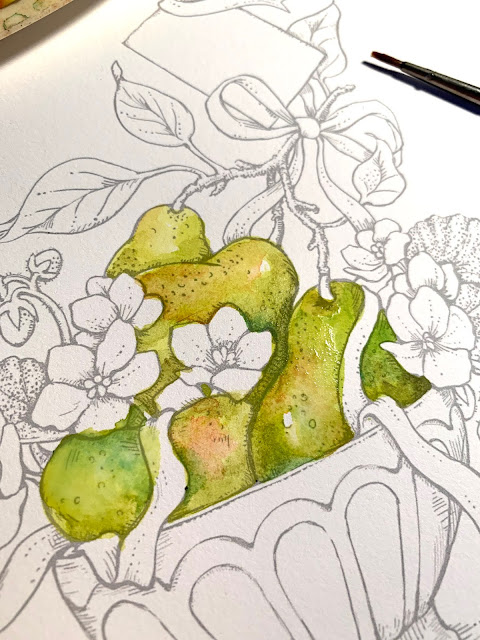
This style feels very comfortable to me. I began by layering yellow-greens, and mixed the complement of yellow-green, which is purplish-red, into areas of the pears that should feel as if they are in shadow or descending into space. Here and there I’d dab on a darker green or a bit of turquoise. I put some thought into my color scheme — and I know from color theory that using the complementary colors of yellowish green for the pears and purplish-pink for the African violets would have a pleasing visual effect. I brought in turquoise blue for the bowl to add some zip, knowing that I would use the blue again in either the little tag or the ribbon.
More layers, and adding color to the bowl and flowers — I am still in my familiar style at this point. I’ve started getting very dark with what Kathy Racoosin calls the “nooks and crannies” — what an apt term — the little spaces that, when colored extremely dark/dull, bring out a real sense of depth to the rest of the piece.
I decided for a rich purple for the ribbon. I started with a more medium lavender tone, and then added shadows with intense violet and then highlights with white mixed with lavender.
I then went to town on the nooks and crannies, using a blend of very dark blue, purple, and a touch of Van Dyke brown to bring out the form of the various elements. With everything “colored in” at this point, I was feeling pretty good about things... and decided to go on to bed before making any odd color decisions due to sleepiness, or dropping my wet paintbrush onto the canvas because my hand was tired. :)
3. When in doubt, sleep on it
Waking up refreshed, the next step of adding painterly details jumped out at me. Add turquoise!
Strokes of turquoise were added the pears, the ribbon, leaves, and shadow areas in my “painterly details” phase. (Notice in the Matisse painting at the beginning of his post, how he has brought in those tangy colors around the pears!) See how my tiny turquoise dabs bring a bit of zing to the painting?
When you look up close, you can see that in some areas I’ve blended my colors, and in others, I’ve deliberately left brushstrokes showing (note the leaves and ribbon). I feel areas like this reflect the artist’s hand. A thoughtful, yet freeing process of deciding which ares to give a little more attitude, a little attention. Remember, I’m not going for realism (not sure I can even paint all the realistically if I tried). I am going for a painterly look with a bit of whimsy.
I put in a washy background of yellow, blue, turquoise, chartreuse.... very light washes over and over. I added thin horizontal lines behind and beneath the bowl to add texture and more painterly detail.
After the background was put in, I loved the sunny feeling of the yellowy glow so much, I decided to dab it around the main content of the painting, too. A dab of yellow on each pear. Dabs on all the leaves, even a bit on the purple ribbon. But it really shows up nicely on the bowl. As if sun is splashing across it.
And.... that is it for me today. I’d love to see you all adding painterly details inspired by any artists that speak to you. It is a great exercise in experiencing color and one step further in deepening your artistry. XOXOXO!!





































